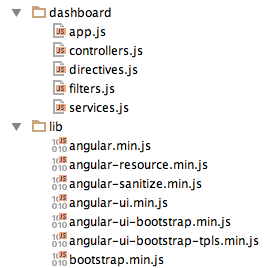Developing with AngularJS - Part II: Dialogs and Data
A couple of days ago, I wrote an article on how I started developing with AngularJS. I used AngularJS for several months to develop a "My Dashboard" feature for a client's product and learned a whole bunch of stuff along the way.
This article provides an overview of how I changed some of My Dashboard's features to use Angular instead of jQuery. After finishing the prototype work in January, we started moving bits and pieces into the main application. We kept the same file names for our Angular-related files and copied them into the project.
All these files are packaged up into a dashboard.js file that's included at the bottom of our Dashboard page. While our prototype used jQuery 1.9 and jQuery UI 1.10, the application's codebase used jQuery 1.7.1 and jQuery UI 1.8.3. Luckily, this didn't present a problem as everything continued to work as expected.
Around this time, we also had many discussions with the Product Team about charts. Since Highcharts required we purchase a license, we took at look at AnyChart, which we were already using. We were able to get AnyChart to work with our existing chart directive with minimal changes. Most changes were in the JSON itself.
We committed the first pass (with sample data still hard-coded) in mid-February.
[Read More]

